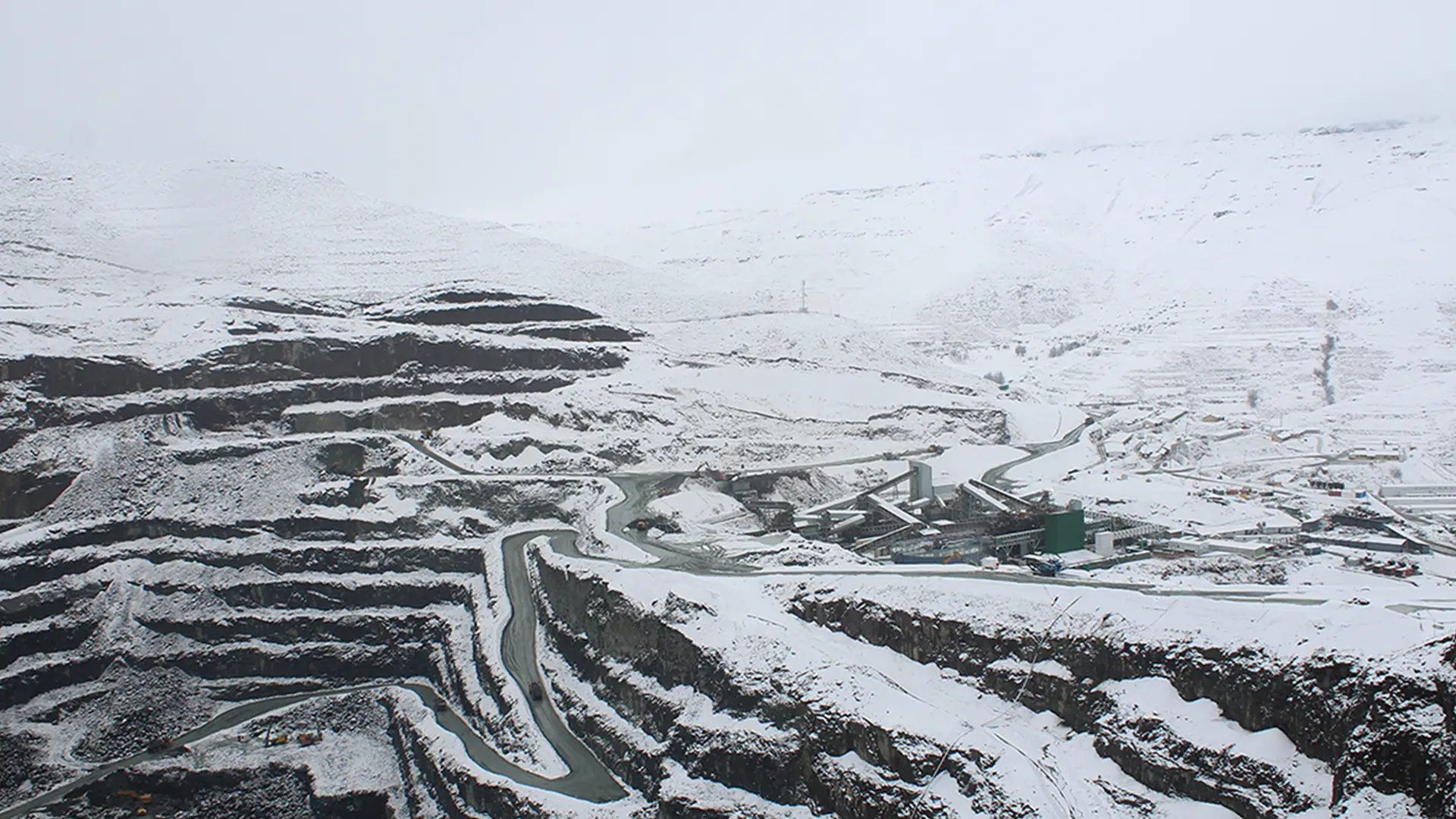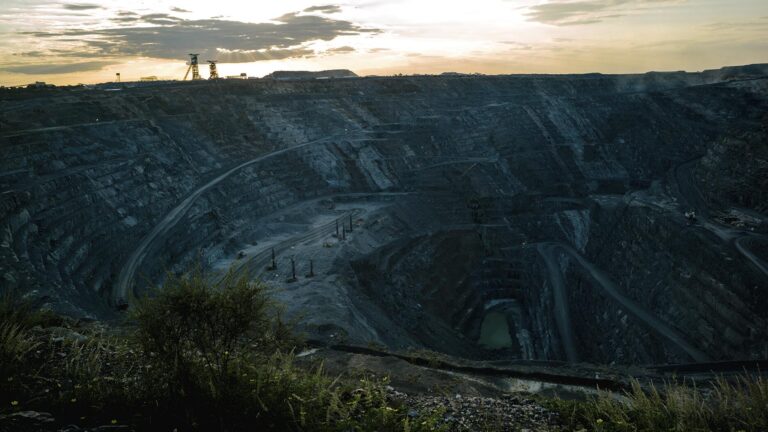Diamonds have fascinated humanity for centuries, symbolizing beauty, wealth, and enduring strength. But behind every sparkling gem lies a story of immense geological forces and sophisticated mining operations deep beneath the Earth’s surface.
From the vast open pits of Botswana to the deep underground mines of Russia and Canada, discover the scale, history, and economic impact of these remarkable mining ventures that shape the global diamond industry. In fact, the global diamond mining industry generates tens of billions of dollars in revenue annually, underscoring its significant role in the world economy.
This blog takes you on a journey to explore the largest diamond mines in the world sites where nature’s brilliance meets human ingenuity.
Overview of The Diamond Industry
The diamond industry is a complex global network that spans from the depths of the earth to the retail showcases where dazzling gems captivate consumers. Diamonds are formed deep underground within kimberlite rock, a volcanic rock brought closer to the earth’s surface through powerful volcanic eruptions.
Mining these precious stones involves two primary methods: open-pit mining, which targets near-surface deposits, and underground mining, which accesses deeper diamond-bearing formations.
This industry is not only about the allure of sparkling gemstones but also a significant economic driver for countries like Russia, Botswana, and South Africa.
Major players such as De Beers Group and Alrosa dominate the diamond mining industry, contributing heavily to global rough diamond production. While a substantial portion of the world’s mined diamonds are designated for industrial use due to their hardness, gem-quality diamonds remain highly prized for their rarity and beauty.
Largest Diamond Mines
1. Kao Mine, Lesotho
- Production: Approximately 13 million carats annually
- Ownership: Namakwa Diamonds in partnership with the Government of Lesotho
- Revenue: Significant contributor to Lesotho’s diamond export economy
- Mining Method: Surface mining (open-pit)
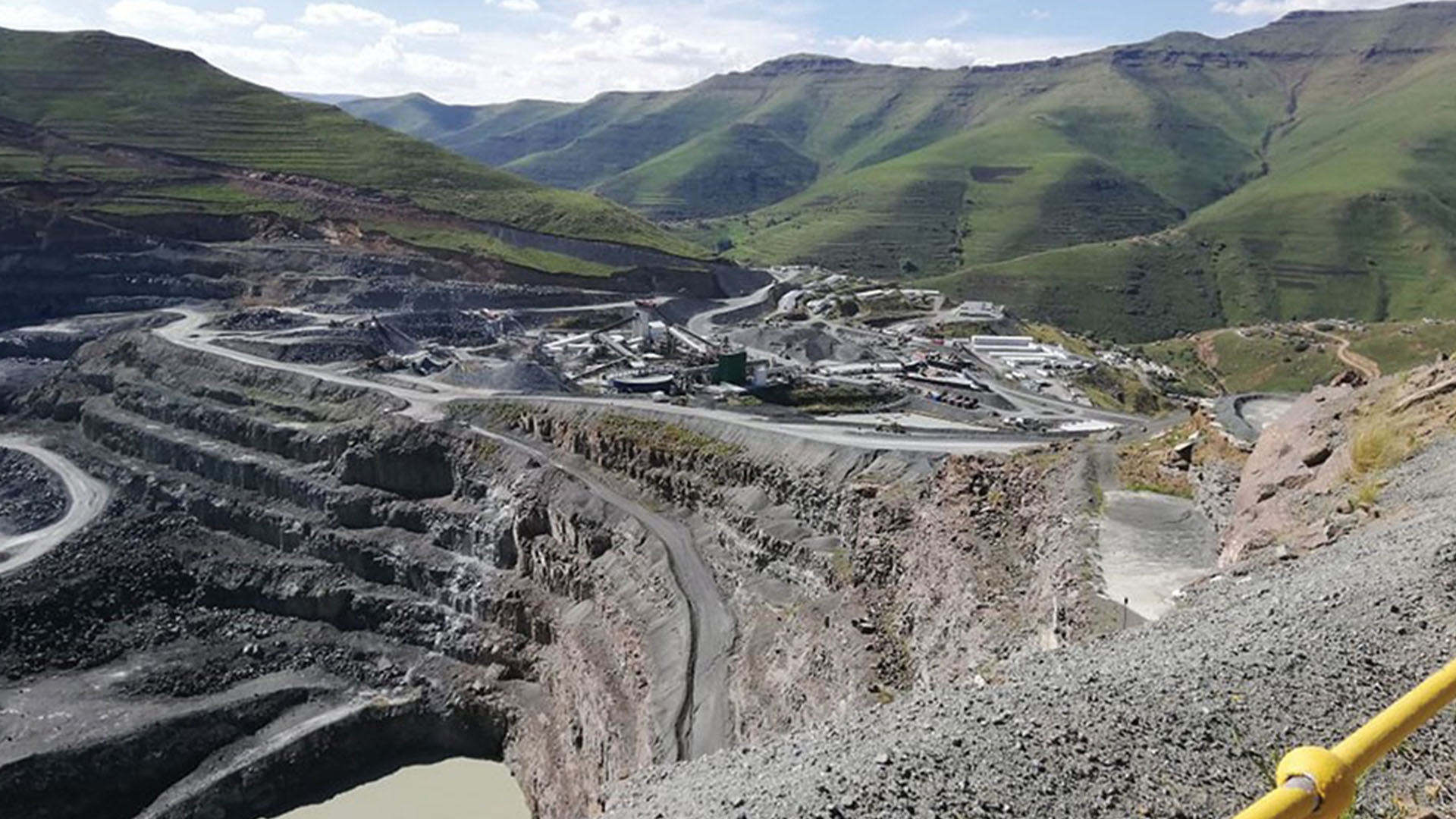
The Kao Mine, located in Butha-Buthe, Lesotho, is one of the largest diamond mines in the world by production volume. Namakwa Diamonds operates this brownfield mine in joint venture with the government of Lesotho.
Kao is renowned for producing high-quality diamonds, including some of the most significant and most valuable pink diamonds ever found. The mine is expected to operate until 2034, playing a key role in Lesotho’s economy and the global diamond industry.
2. Jwaneng Diamond Mine, Botswana
- Production: Around 12 million carats annually
- Ownership: De Beers Group in partnership with the government of Botswana
- Revenue: One of Botswana’s largest sources of national revenue
- Mining Method: Open-pit mining
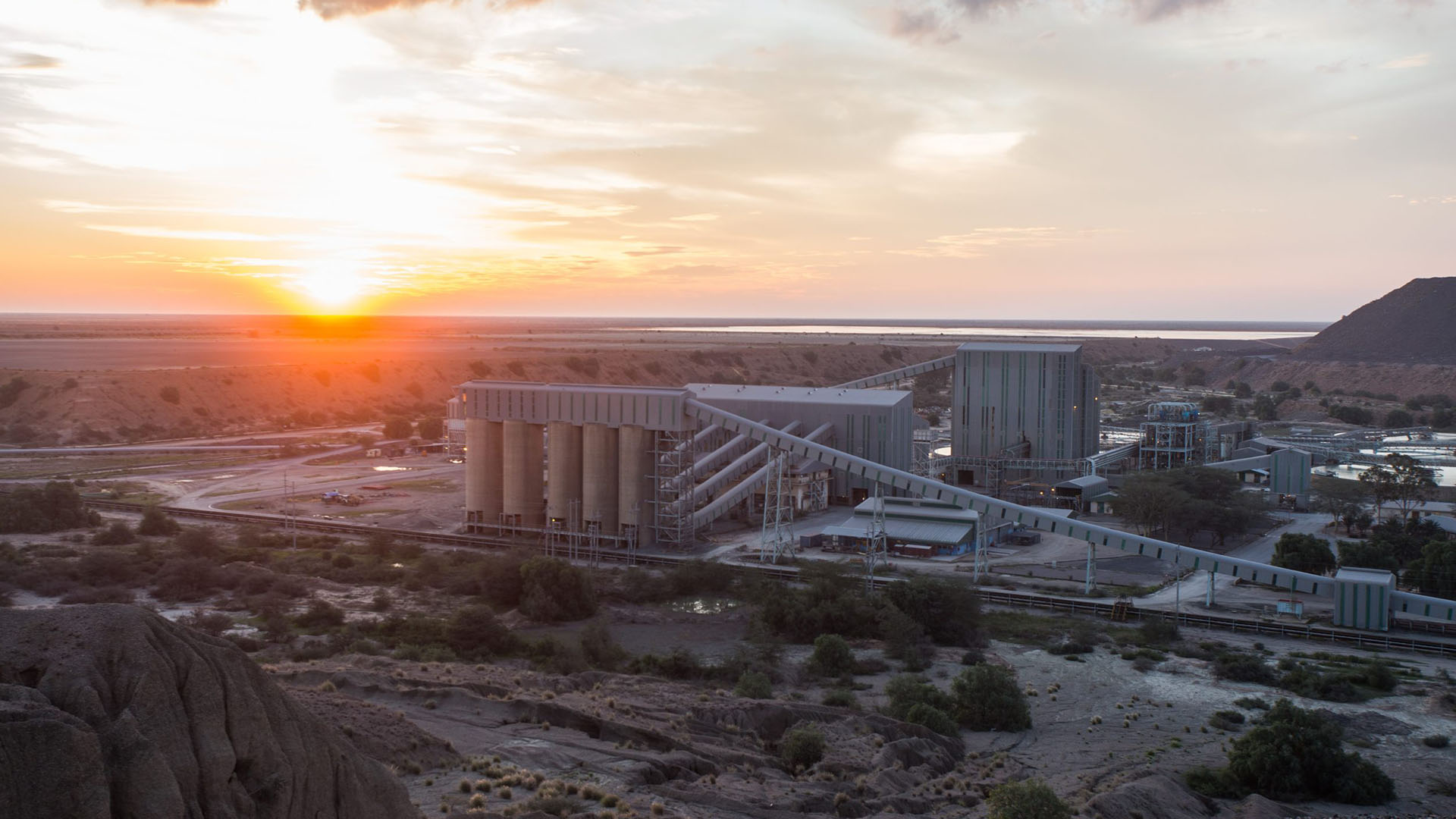
Situated in the Kalahari Desert, the Jwaneng Mine is known as the richest diamond mine in terms of value. This open-pit mine has been operational since 1982 and continues to expand its depth. The mine produces predominantly gem-quality diamonds, making it a critical asset for Botswana’s economy. De Beers and the Botswana government jointly manage the mine, ensuring that revenues support national development projects. Jwaneng is being transformed into an underground diamond mine as they have undertaken their Cut 10 Project
3. Udachny Diamond Mine, Russia
- Production: Approximately 5 million carats annually
- Ownership: ALROSA Group
- Revenue: Major contributor to Russia’s diamond export market
- Mining Method: Transitioned from open-pit to underground mining
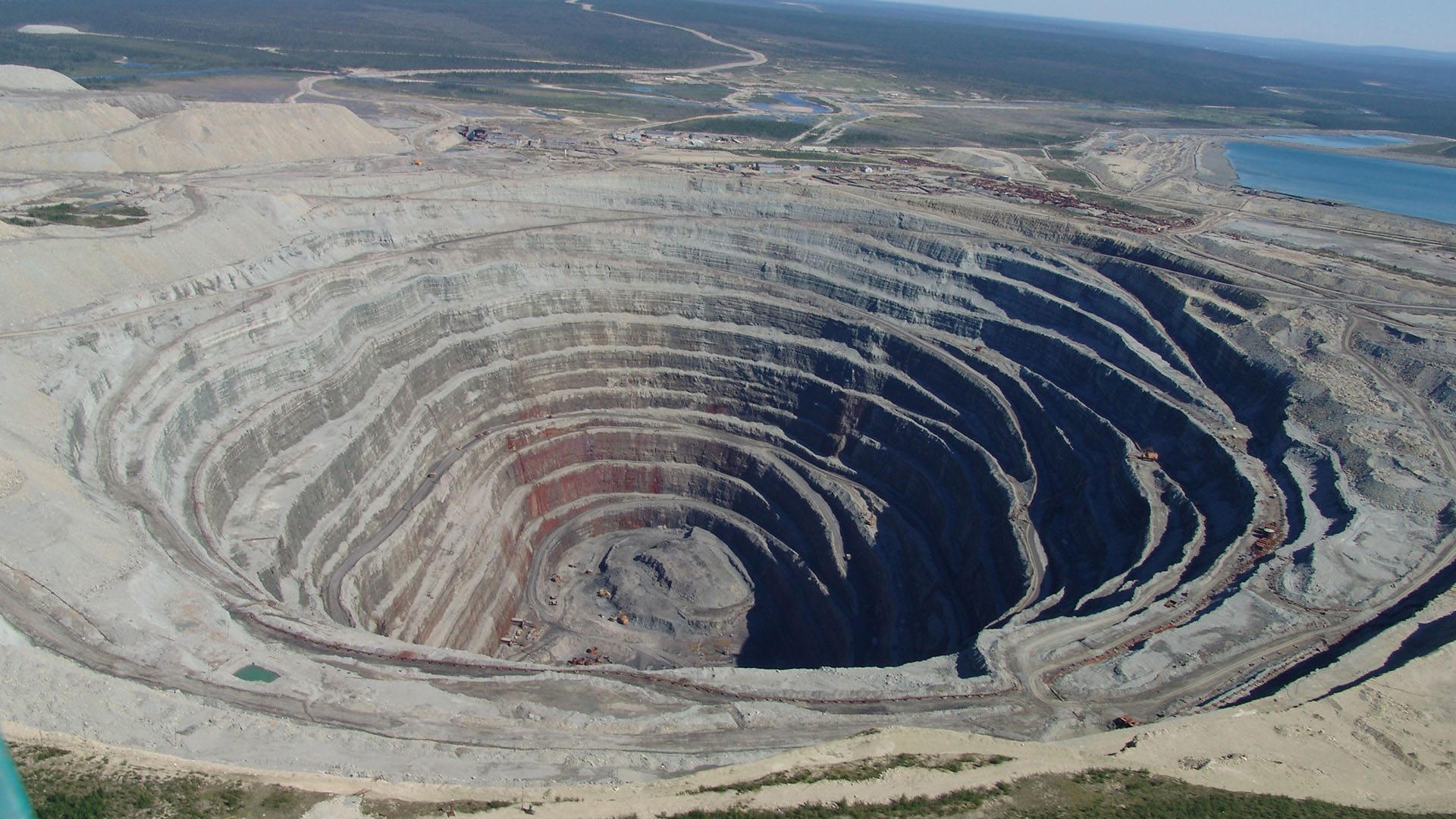
Udachny, located in Yakutia, Russia, is the third-largest diamond mine globally. It began as a deep open-pit mine but shifted to underground mining as surface deposits depleted. The mine uses modern underground mining technologies to maintain production levels. Udachny’s operations are integral to ALROSA’s output, producing a mix of gem-quality and industrial diamonds.
4. Orapa Diamond Mine, Botswana
- Production: Around 11 million carats annually
- Ownership: De Beers Group in partnership with the government of Botswana
- Revenue: Significant contributor to Botswana’s GDP
- Mining Method: Open-pit mining
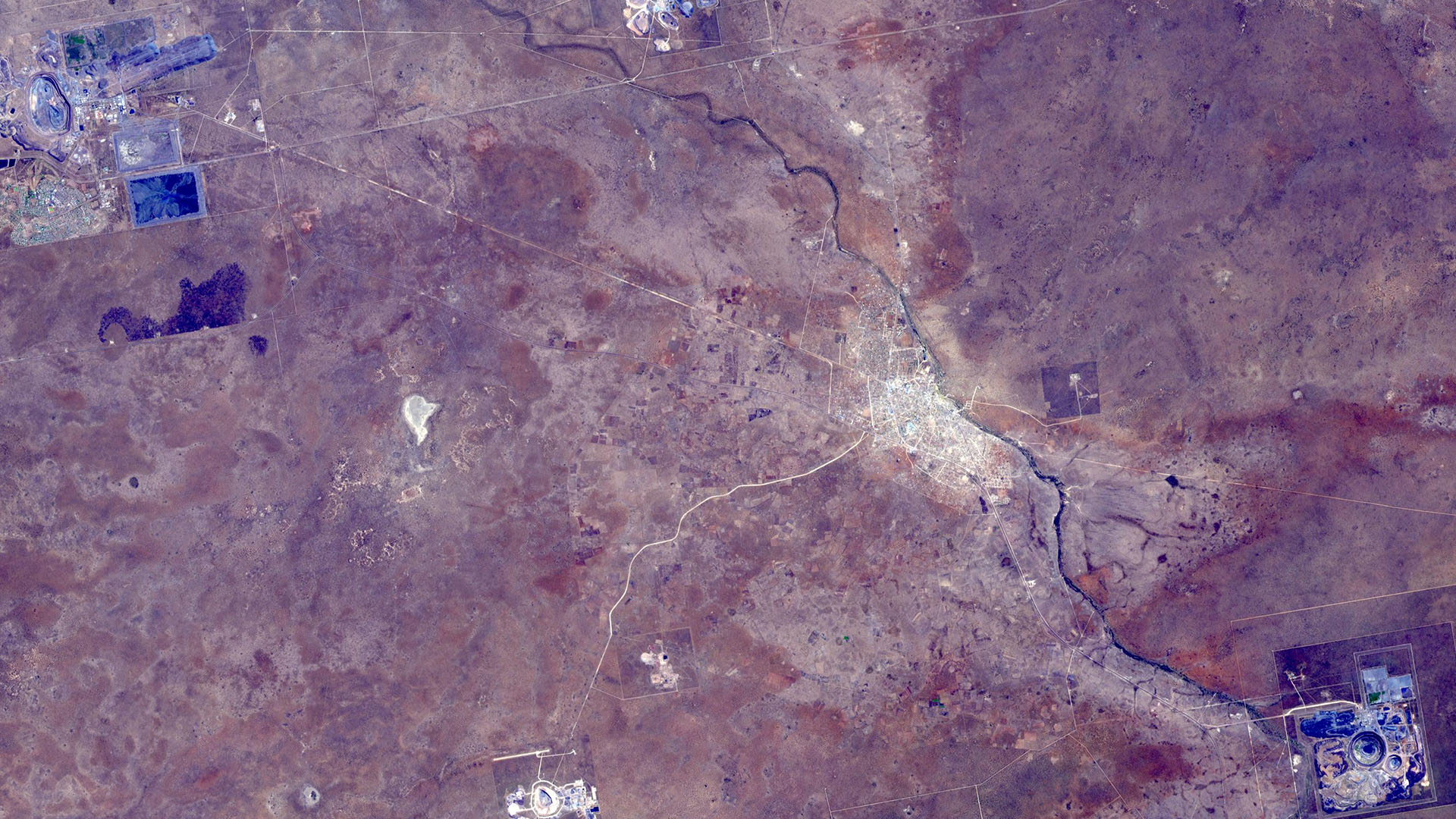
The Orapa Mine is one of the largest open-pit diamond mines in the world, located in Botswana’s Central District. Operational since 1971, it has a strong track record of consistent production. The mine’s output includes a high volume of gem-quality diamonds, supporting Botswana’s position as a leading diamond producer. It is managed by De Beers and the Botswana government, with revenues reinvested into local infrastructure and social programs.
5. Catoca Diamond Mine, Angola
- Production: Around 10 million carats annually
- Ownership: Joint venture among Endiama, ALROSA Group, China Sonangol, and Odebrecht Mining
- Revenue: Largest single contributor to Angola’s diamond production revenue
- Mining Method: Open-pit mining
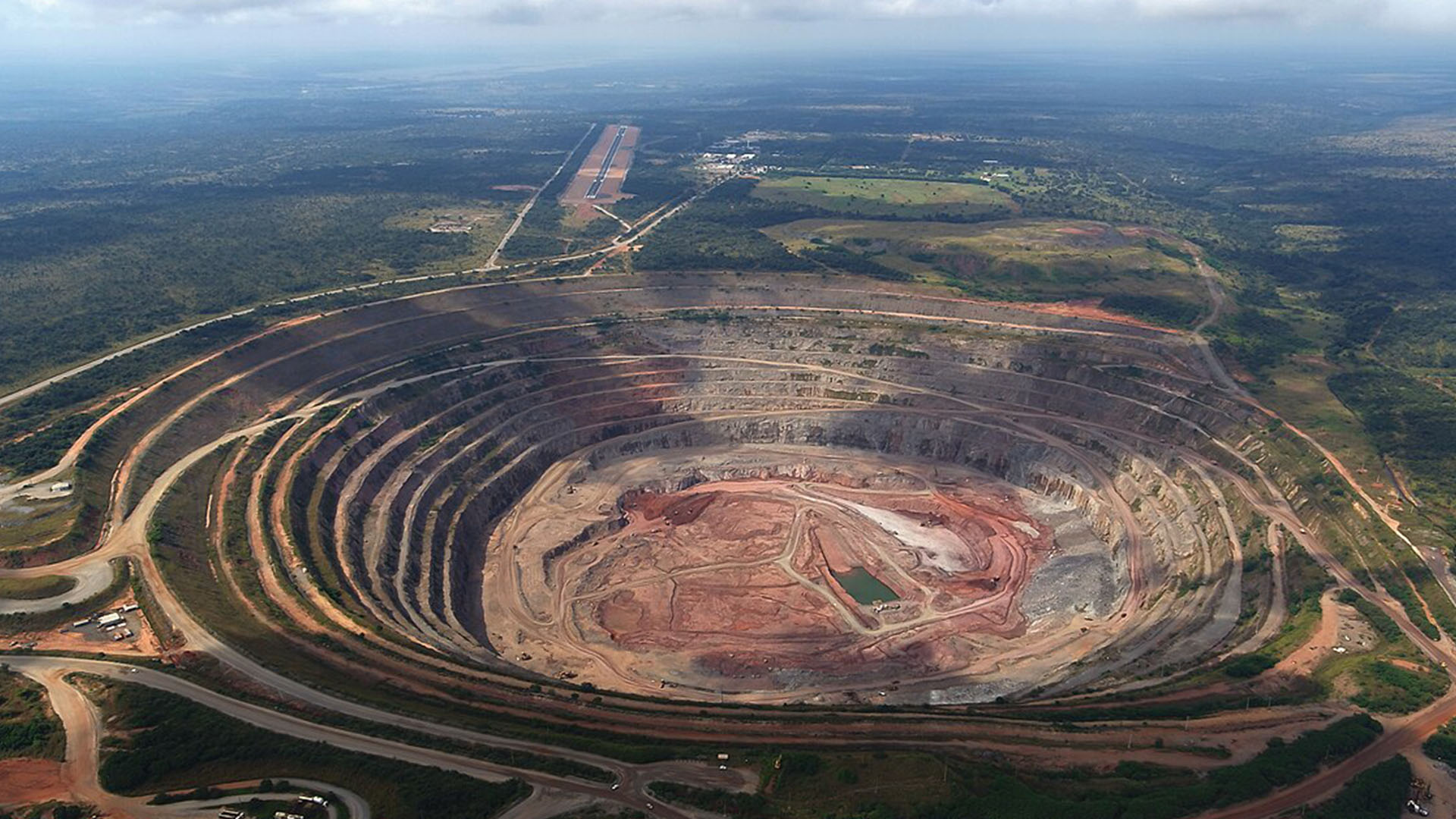
Located in Lunda Sul province, Angola, the Catoca Mine is the country’s largest diamond producer. This greenfield mine operates through a joint venture combining state and international partners. Catoca produces a mix of gem-quality and industrial diamonds, with mining operations extending to depths exceeding 245 meters. The mine’s revenue plays a crucial role in Angola’s post-war economic recovery.
6. Ekati Diamond Mine, Canada
- Production: Approximately 7.5 million carats annually
- Ownership: Burgundy Diamond Mines
- Revenue: Key contributor to Canada’s diamond export market
- Mining Method: Combination of open-pit and underground mining
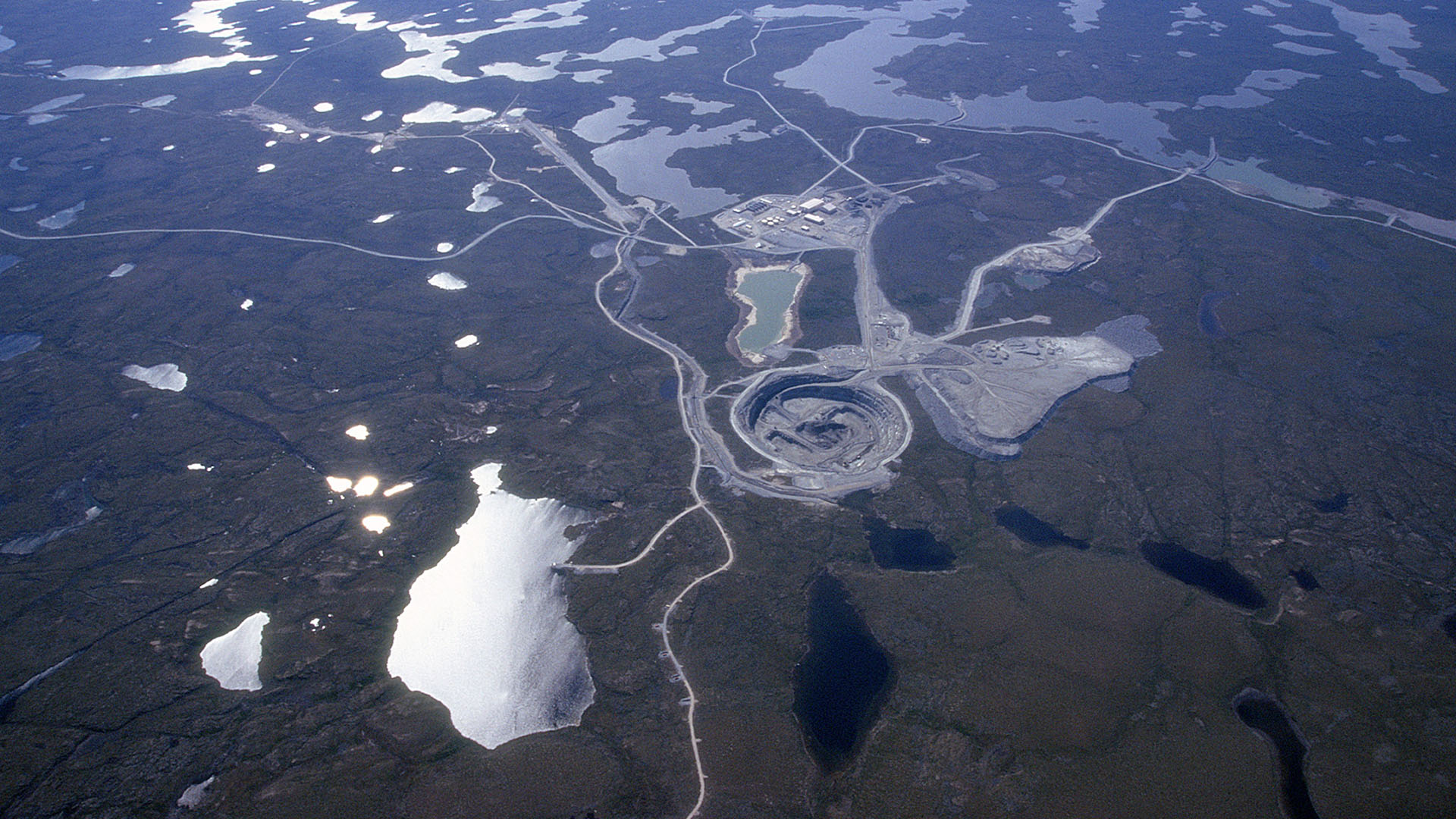
The Ekati Mine, located in Canada’s Northwest Territories, was the country’s first diamond mine combining both open-pit and underground operations. Since its opening in 1998, Ekati has been a leader in technological innovation within the diamond mining industry. The mine produces high-quality diamonds, many accompanied by certificates of authenticity. Its operations are pivotal to Canada’s emergence as a major diamond producer.
7. Venetia Diamond Mine, South Africa
- Production: Around 4 million carats annually
- Ownership: De Beers Group
- Revenue: Largest diamond producer in South Africa by volume
- Mining Method: Transitioning from open-pit to underground mining
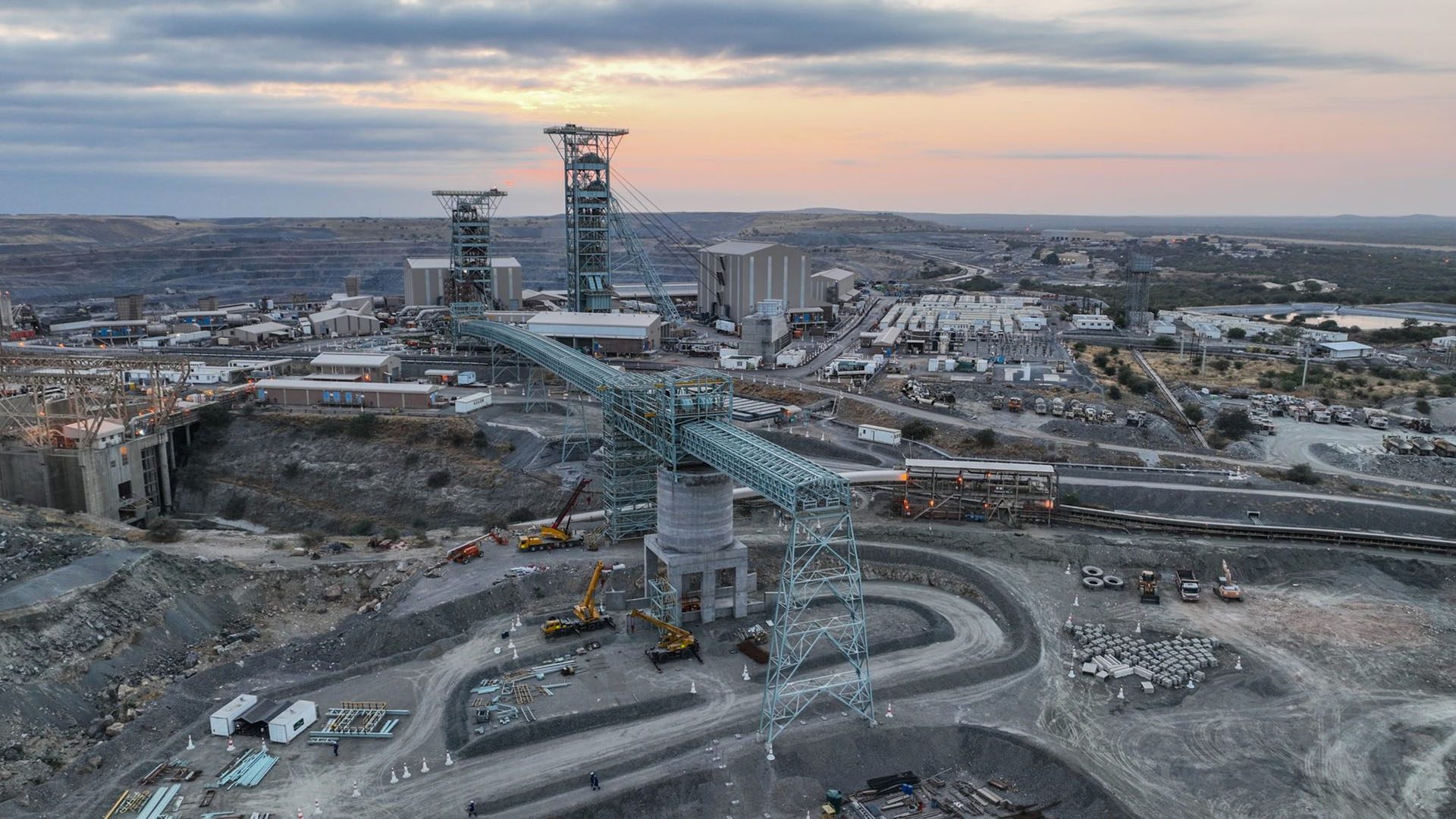
Venetia is South Africa’s largest diamond mine, located near the Limpopo River. It has been operational since the late 1990s and is currently transitioning from open-pit mining to underground operations to extend its lifespan. Venetia produces a high percentage of gem-quality diamonds and is a critical asset for De Beers’ South African operations, contributing significantly to the local economy.
8. Lomonosov Diamond Mine, Russia
- Production: Around 2 million carats annually
- Ownership: ALROSA Group
- Revenue: Important contributor to Russia’s diamond output
- Mining Method: Open-pit mining
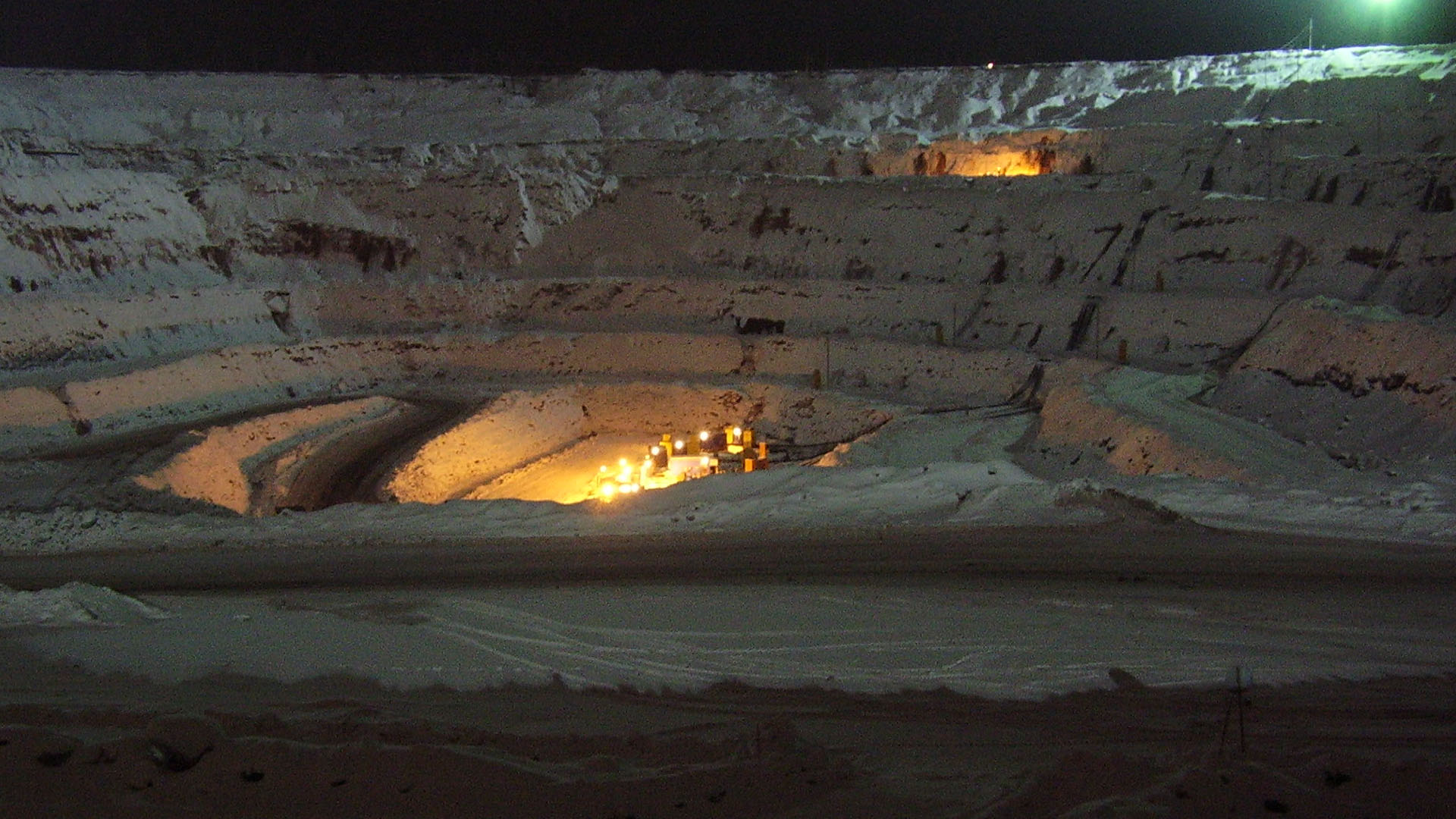
Situated in Arkhangelsk Oblast, Russia, the Lomonosov Mine is known for producing a notable proportion of fancy colored diamonds. The open-pit mine has been operational since the early 2000s and continues to contribute to ALROSA’s overall production. Its unique output enhances the diversity of diamonds available on the market.
9. Mir Diamond Mine, Russia
- Production: Approximately 3 million carats annually (before closure)
- Ownership: ALROSA Group
- Revenue: Historically significant contributor to Russia’s diamond industry
- Mining Method: Open-pit and underground mining
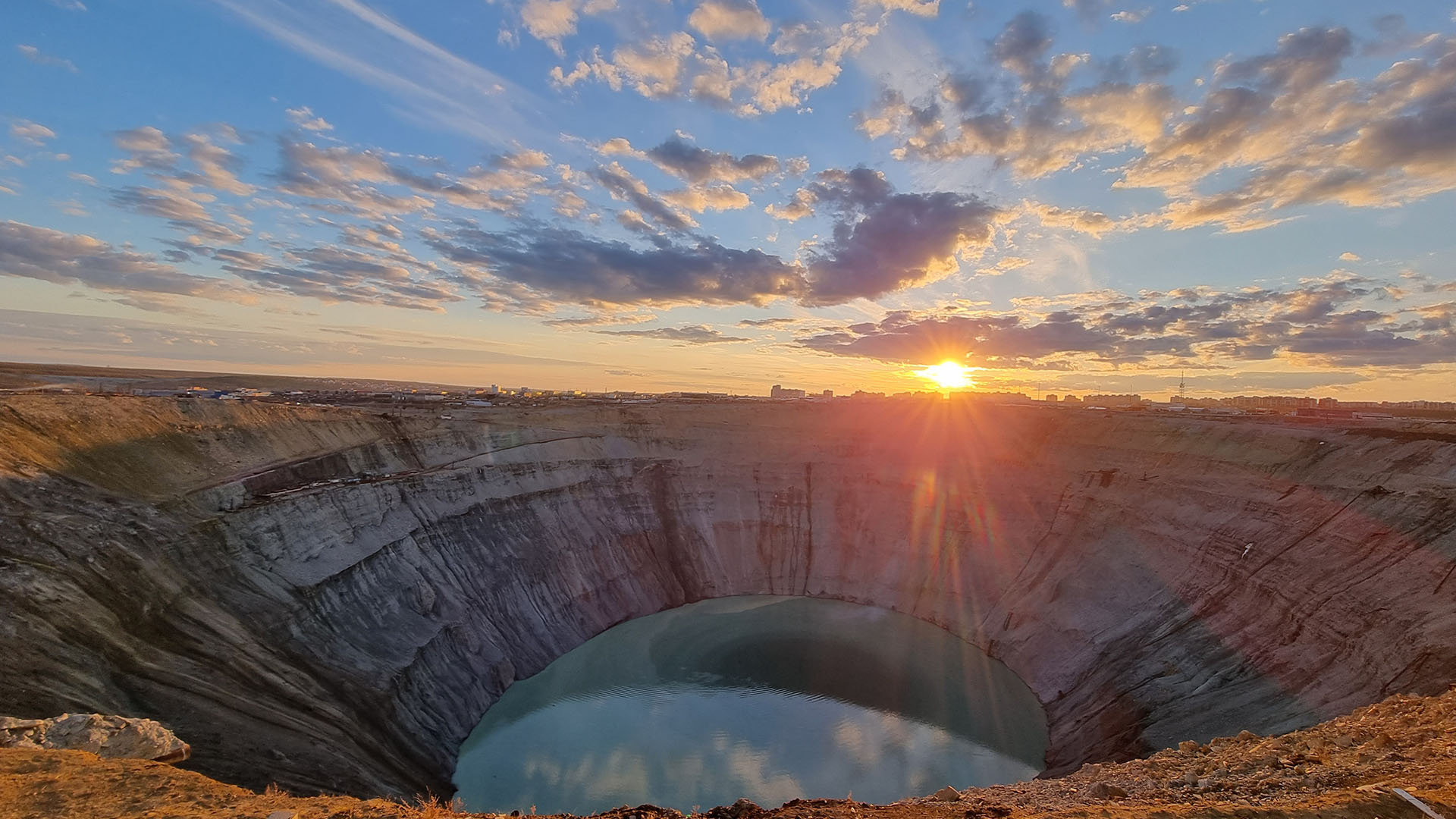
The Mir Mine, located in Yakutia, Russia, was one of the earliest large-scale diamond mines. It operated as an open-pit mine from 1957 until 2001, after which underground mining commenced until 2017. Although currently closed, Mir was instrumental in establishing Russia’s dominance in diamond production and is expected to resume operations in the future.
10. Jubilee Diamond Mine, Russia
- Production: Around 5 million carats annually
- Ownership: ALROSA Group
- Revenue: Major contributor to Russia’s diamond exports
- Mining Method: Open-pit mining
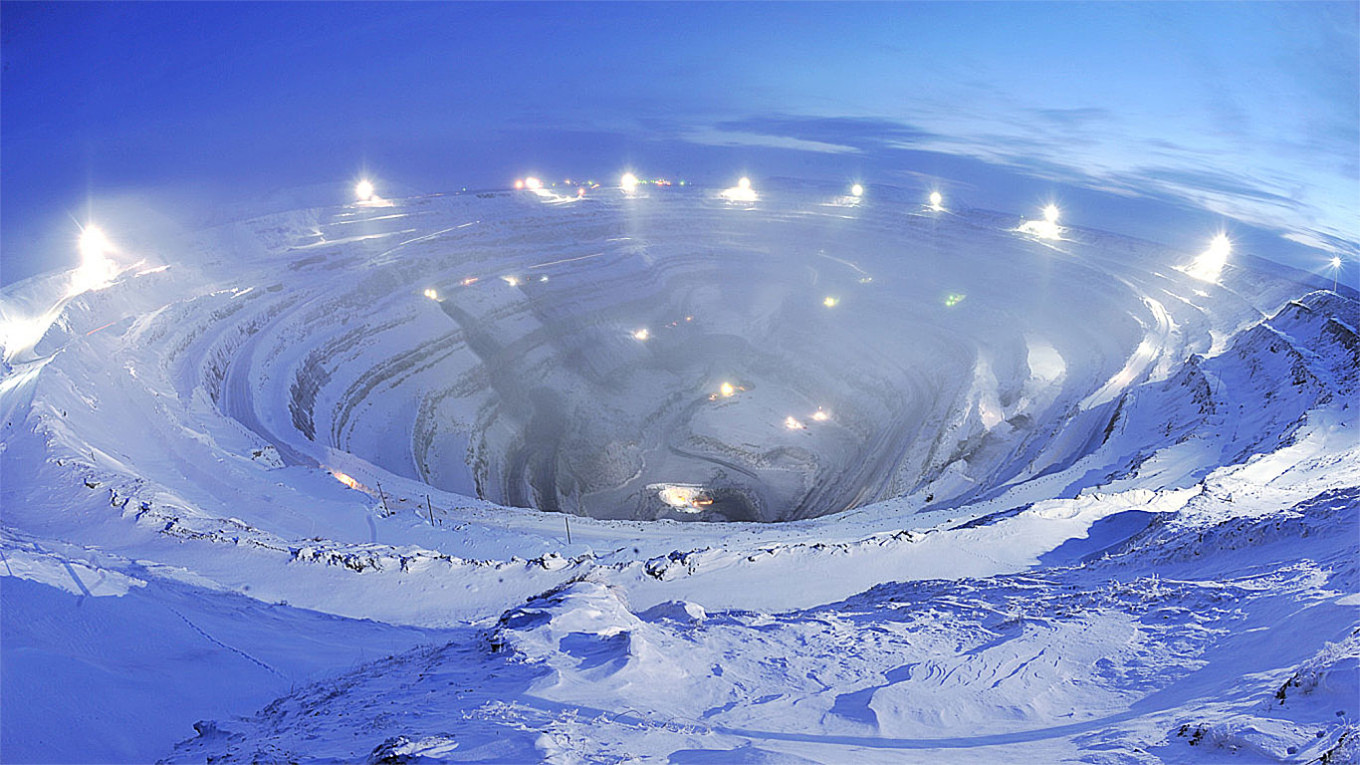
The Jubilee Mine, also known as Yubileyny, is an open-pit mine located in Yakutia, Russia. It has been operational since the mid-1980s and boasts large reserves of high-quality diamonds. The mine continues to expand its depth and production capacity, playing a vital role in ALROSA’s portfolio and Russia’s position as the world’s largest diamond producer.
Diamond Mining in Africa
Africa remains a continent rich in diamond resources, hosting many of the world’s largest diamond mines. Botswana leads with the Orapa and Jwaneng mines, both surface mines that contribute significantly to the country’s GDP. The Kalahari Desert region, where these mines are located, is a prime diamond-producing area, with De Beers geologists having played a crucial role in their discovery and development.
Lucara’s Karowe mine is one of the most notable mines to mention, with it recording the second-largest diamond in the world.
South Africa’s Venetia Diamond Mine is a cornerstone of the nation’s diamond mining industry, with deposits located near the Limpopo River in the Central District. This mine is transitioning to an underground operation to sustain production levels and extend its life.
Angola’s Catoca Mine, located in the Lunda Sul province, is a major contributor to Africa’s diamond output. This greenfield mine is a joint venture that exemplifies collaboration between international partners and the Angolan government, producing diamonds characterized by their rough, round dodecahedral shapes and a distinctive greenish skin.
Lesotho’s Kao Mine is another significant contributor to Africa’s diamond mining landscape. Located in Butha-Buthe, Kao is renowned for producing high-quality diamonds, including some of the world’s largest and most valuable pink diamonds. Operated by Namakwa Diamonds in partnership with the government of Lesotho, this surface mine plays a vital role in the country’s economy and the broader diamond industry. Kao is expected to continue operations until 2034, further strengthening Africa’s position in the global diamond market.
Diamond Mining in Other Countries
Canada has emerged as a significant diamond producer in recent decades, with the Ekati and Diavik mines leading the way. These mines, located in the Northwest Territories, combine surface and underground mining methods to extract high-quality diamonds, many of which are accompanied by certificates of authenticity featuring the official polar bear insignia.
Russia’s diamond mining industry is extensive, with multiple mines such as Aikhal, Udachny, and Jubilee contributing to the country’s position as the largest diamond producer by volume. The mines in Yakutia are known for producing diamonds with sharp corners and eight facets, prized for their clarity and brilliance.
Australia, though not as large in volume, is famous for its colored diamonds, particularly from the Argyle Mine. This mine has historically been one of the largest diamond producers globally, known for its pink, purple, and red diamonds, which are highly sought after in the gem market.
Types of Diamond Mines
Diamond mines come in several types, each suited to different geological conditions:
- Open-pit mines: These surface mines, such as the Jwaneng and Orapa mines, extract diamonds from near-surface deposits. Open-pit mining is often the most cost-effective method due to easier access.
- Underground mines: Used for deeper deposits, these mines require advanced technology and infrastructure. The Aikhal and Udachny mines in Russia are prime examples of underground operations that extend mining life beyond the limits of open pits.
- Alluvial mines: Found in riverbeds and ocean floors, these mines extract diamonds that have been transported by natural forces. The Democratic Republic of Congo has significant alluvial mining operations, often carried out by artisanal miners.
Diamond Quality and Production
The quality of diamonds is assessed based on the four Cs: carat weight, cut, color, and clarity. The largest diamond mines produce millions of carats annually, but the quality varies widely. Mines like Jwaneng and Venetia are known for gem-quality diamonds, while others may yield mostly industrial-grade stones.
Annual production figures highlight the scale of these operations. For example, the Aikhal Mine produces over 1.3 million carats each year, contributing substantially to global rough diamond supply. The production process involves mining the ore, sorting, cleaning, and cutting to bring out the diamond’s full beauty.
The Largest Diamond Ever Mined
The largest diamond ever mined is the Cullinan Diamond, discovered in South Africa. Weighing over 3,100 carats in its rough state, the Cullinan was later cut into several smaller stones, including the famous Cullinan I and II, which are part of the British Crown Jewels.
Other notable large diamonds include the Orlov Diamond and the Koh-i-Noor Diamond, both celebrated for their size and historical significance. While large diamonds are rare, their discovery often brings global attention to the mines and regions where they are found.
Diamond Mining Process
Diamond mining involves several stages:
- Exploration: Advanced technologies such as seismic surveys and drilling help locate potential diamond deposits.
- Mining: Depending on the deposit’s depth, either open-pit or underground mining methods are employed to extract diamond-bearing ore.
- Processing: The ore is sorted, cleaned, and the diamonds are separated from waste material. This step often involves sophisticated machinery to ensure efficiency.
- Cutting and Polishing: Skilled artisans cut and polish the diamonds to enhance their brilliance and value.
Diamond Mine Technology
Technological advancements have revolutionized diamond mining. Automated sorting machines and precision cutting tools increase productivity while reducing waste. Blockchain technology is being explored to enhance transparency and security across the diamond supply chain.
Sustainability efforts include the adoption of renewable energy sources like solar and wind power, reducing the environmental footprint of mining operations.
Challenges Facing Diamond Mines
Diamond mines face numerous challenges:
- Environmental concerns: Mining impacts local ecosystems, requiring careful management and rehabilitation efforts.
- Social responsibility: Ensuring fair labor practices and supporting local communities are critical for sustainable operations.
- Economic pressures: Fluctuating diamond prices and rising production costs can affect profitability and investment decisions.
Future of Diamond Mines
The future of diamond mining is shaped by evolving technologies, market demands, and environmental considerations. Lab-grown diamonds may influence natural diamond demand, while sustainability initiatives are increasingly important.
New diamond deposits, particularly in regions like Canada’s Northwest Territories, offer opportunities for growth. Despite uncertainties, diamond mines are expected to remain vital economic contributors for decades.
Conclusion on Diamond Mines
Diamond mines are more than just sources of precious stones; they are engines of economic development and innovation. The largest diamond mines in the world, such as the Aikhal and Orapa mines, continue to produce millions of carats annually, sustaining the global diamond supply.
While facing environmental and economic challenges, the diamond mining industry is adapting through technology and sustainability efforts. As new discoveries emerge and mining techniques advance, diamond mines will remain an integral part of the global economy and the story behind the world’s most treasured gems.
Frequently Asked Questions (FAQ)
What are the largest diamond mines in the world?
The largest diamond mines in the world include the Aikhal Mine in Russia, the Jwaneng Mine in Botswana, the Udachny Mine in Russia, the Orapa Mine in Botswana, and the Catoca Mine in Angola. These mines produce millions of carats annually and are key contributors to global diamond production.
Who owns the biggest diamond mines?
Many of the largest diamond mines are owned or operated by major companies such as the ALROSA Group in Russia and the De Beers Group in Botswana and South Africa. Some mines, like Catoca in Angola, are joint ventures involving state-owned and international partners.
What mining methods are used in diamond mining?
Diamond mining primarily uses open-pit mining for near-surface deposits and underground mining for deeper deposits. Some mines, like Aikhal and Udachny, have transitioned from open-pit to underground mining as surface resources became depleted.
Which countries produce the most diamonds?
Russia is the largest producer by volume, followed by Botswana, the Democratic Republic of Congo, Canada, and South Africa. These countries host some of the world’s largest diamond mines and significantly contribute to the global diamond supply.
How does diamond mining impact the economy?
Diamond mining is a major economic driver in producing countries, contributing significantly to GDP, government revenue, and job creation. Revenues from diamond mines often fund infrastructure, social programs, and economic development projects.
What is the difference between gem-quality and industrial diamonds?
Gem-quality diamonds are prized for their clarity, color, and cut, making them suitable for jewelry. Industrial diamonds, which make up a larger portion of production, are valued for their hardness and are used in cutting, grinding, and drilling applications.
Are diamond mines sustainable?
The diamond mining industry is increasingly adopting sustainable practices, including environmental management, renewable energy use, and community engagement to minimize ecological impact and support local populations.
What is the largest diamond ever mined?
The largest diamond ever mined is the Cullinan Diamond, discovered in South Africa. It weighed over 3,100 carats in its rough form and was later cut into several famous stones, including those in the British Crown Jewels.

